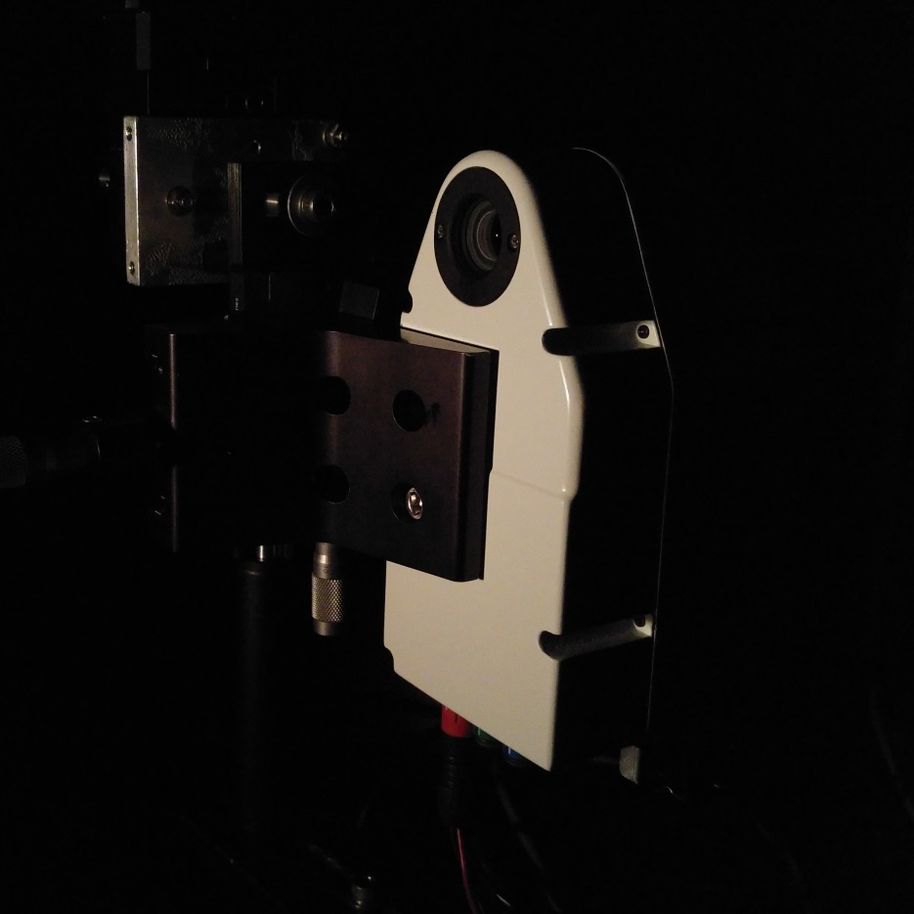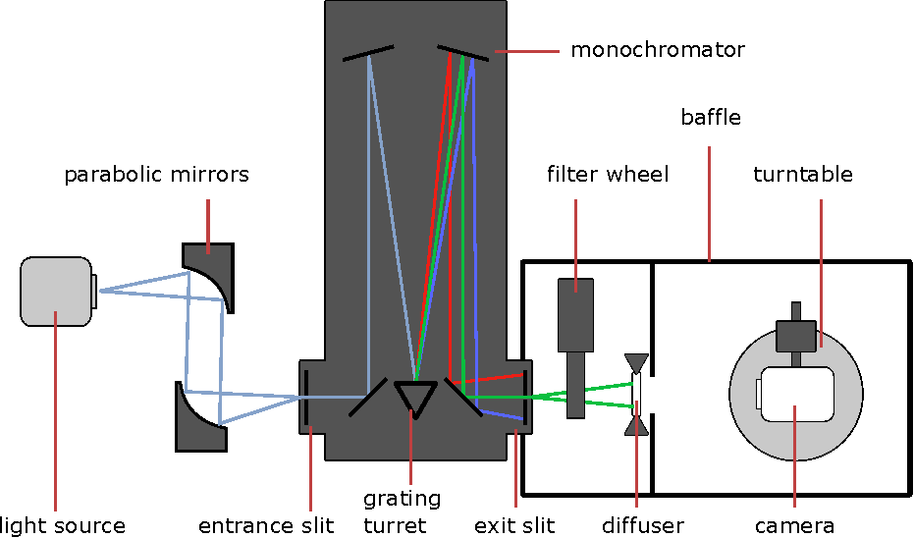Hyperspectral camera calibration (2017–2019)
Background
Each pixel of a typical digital color photograph contains the intensity levels of three color channels (red, green, and blue). By contrast, each pixel of a hyperspectral image contains data of several narrow wavelength channels across the electromagnetic spectrum. This enables more information to be extracted from images, which is why hyperspectral cameras can be used in several applications, such as mapping of forests, monitoring of the health of crops, and identifying different types of minerals. Many of the application require precise radiometric calibration of the hyperspectral cameras, which can be difficult due to the complexity of these instruments and large quantities of data.

Characterising uniformity of hyperspectral cameras
The sensitivity of a camera depends on the angle and location of the light incident on the system. For accurate radiometric measurements, the nonuniformity of the optical system needs to be corrected. In the first part of the project, we constructed a system to perform this flat-field correction. [1] The system is based on a relatively small (30 cm in diameter) integrating sphere with 5-cm opening, and a goniometer that rotates the camera (Figure 1). The system enables different correction geometries to be used and compared. This is useful when estimating the uncertaintiesy related to the flatfield correction and the radiometric measurements in general.

Characterising spectral responsivity of cameras
Hyperspectral cameras capture the spectral power distribution of the objects in the imaged view via dozens of narrow-band spectral channels of the camera. Knowledge of the spectral responsivity of the channels is essential when interpreting the acquired hyperspectral data and assessing its reliability. In the second part of the project, we developed a measurement setup and the corresponding data analysis routine for characterising the spectral responsivity of a hyperspectral camera [2]. This method was used to characterise the spectral responsivity of a Fabry–Pérot-interferometer-based hyperspectral camera (Figure 2), and it was able to reveal several channel leaks in the measured wavelength range 470 – 930 nm.
Contact persons: Petri Kärhä, Alexander Kokka, Oskari Pekkala, and Tomi Pulli
References:
1. Alexander Kokka, Tomi Pulli, Eija Honkavaara, Lauri Markelin, Petri Kärhä, and Erkki Ikonen, “Flat-field calibration method for hyperspectral frame cameras,” Metrologia 56, 055001, 8 p. (2019).
2. Oskari Pekkala, Tomi Pulli, Alexander Kokka, and Erkki Ikonen, “ Setup for characterising the spectral responsivity of Fabry–Pérot-interferometer-based hyperspectral cameras,” Metrologia 56, 065005, 6 p. (2019).
- Published:
- Updated: